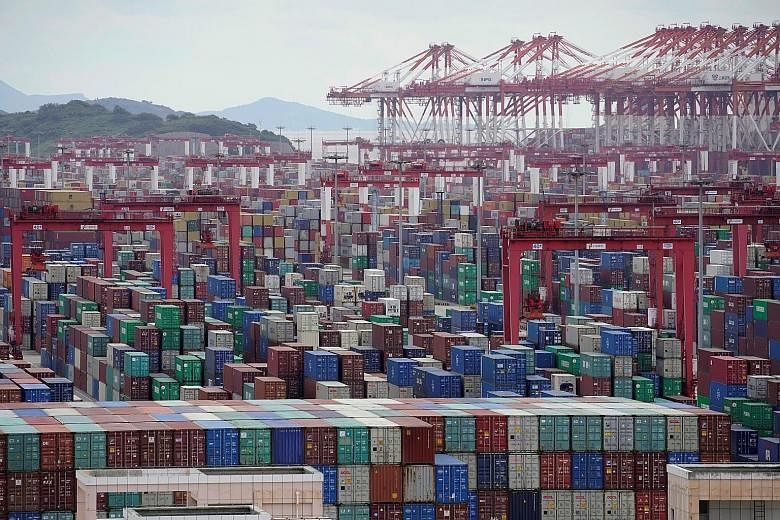BEIJING • China's exports grew at a robust pace last month in yet another boost to the nation's economic recovery as global demand picks up amid progress in worldwide Covid-19 vaccination, while import growth surged to the highest in four years.
Yesterday's data suggests the world's No. 2 economy will continue to gather momentum as it emerges from the Covid-19-led slump early last year, though a lagging consumer rebound, a resurgence in virus cases in many countries and US-China tensions have raised risks for the outlook.
Exports in dollar terms soared 30.6 per cent last month from a year earlier, but at a slower pace from a record 154.9 per cent growth in February. Analysts polled by Reuters have forecast a 35.5 per cent jump in shipments.
"Strong foreign demand is likely to be sustained throughout the second quarter as the global economy further recovers," said Hwabao Trust economist Nie Wen.
"But with the acceleration in global vaccination efforts, industrial sectors in other countries are gradually restarting. It remains to be seen if China's stellar export growth will begin to slide."
Despite sporadic Covid-19 cases in China's border cities, the authorities have been able to largely contain the virus in a boost to the lagging consumer recovery.
China managed to largely bring the pandemic under control much earlier than many other countries, thanks to stringent anti-virus curbs and lockdowns at the initial phase of the outbreak last year.
Asian stock markets were broadly positive after the data, with strong imports giving investors confidence that domestic demand is improving as part of the recovery from the pandemic.
The data shows total Chinese imports rose 38.1 per cent year on year last month, the fastest pace since February 2017, on high commodity prices, beating a 23.3 per cent forecast and compared with 17.3 per cent growth in February.
Meat imports of 1.02 million tonnes last month marked the highest monthly volume since at least January last year, while imports for soya beans, iron ore, copper and crude oil also rose.
China posted a trade surplus of US$13.8 billion (S$18.5 billion) last month, versus analysts' expectations for the surplus to rise to US$52.05 billion from US$37.88 billion in February.
Official and private manufacturing surveys in China point to robust growth, with export orders returning to growth amid improving foreign demand.
But many analysts expect exports to lose some momentum in the short term and that advantages of orders transferred from other countries due to virus-related disruptions will begin to abate.
Customs spokesman Li Kuiwen said overall trade growth in the second quarter could show the pace slowing due to a higher base comparison in the period a year ago when a jump in pent-up demand boosted the headline figures.
Resurgent Covid-19 infections abroad and constraints in global trade have left some companies grappling with prolonged delivery timeframes and surging prices of raw materials.
Makers of cars and electronic devices such as TVs and smartphones are sounding alarm bells about a global chip shortage, which is causing manufacturing delays as consumer demand bounces back from the lows of last year.
Heji Trade & Credit Research Centre founder Meng Xianglong believes the recent surge in commodity prices has already deterred some exporters from taking on orders, in a sign of the weaknesses to come for the next few months.
"Factories are now facing a squeeze in profits. Even though today's data is robust, they're suffering from pains in reality."
China's gross domestic product expanded 2.3 per cent last year, the only major economy to post growth in 2020. Still, the massive initial hit from the Covid-19 crisis meant China's growth last year was still its weakest in 44 years.
REUTERS

